FORMER MELBOURNE TRAMWAYS AND OMNIBUS COMPANY STABLES
1 HOPETOUN PLACE FITZROY NORTH, YARRA CITY
-
Add to tour
You must log in to do that.
-
Share
-
Shortlist place
You must log in to do that.
- Download report
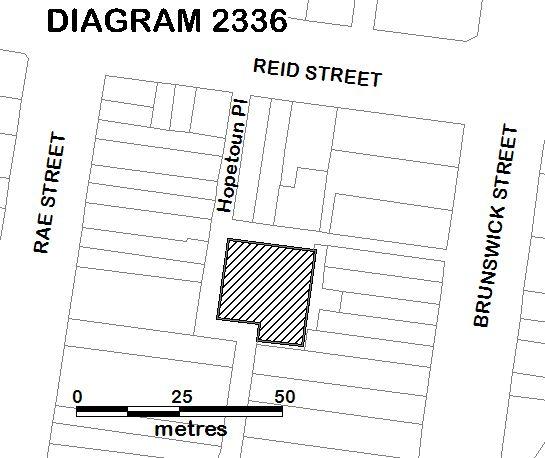

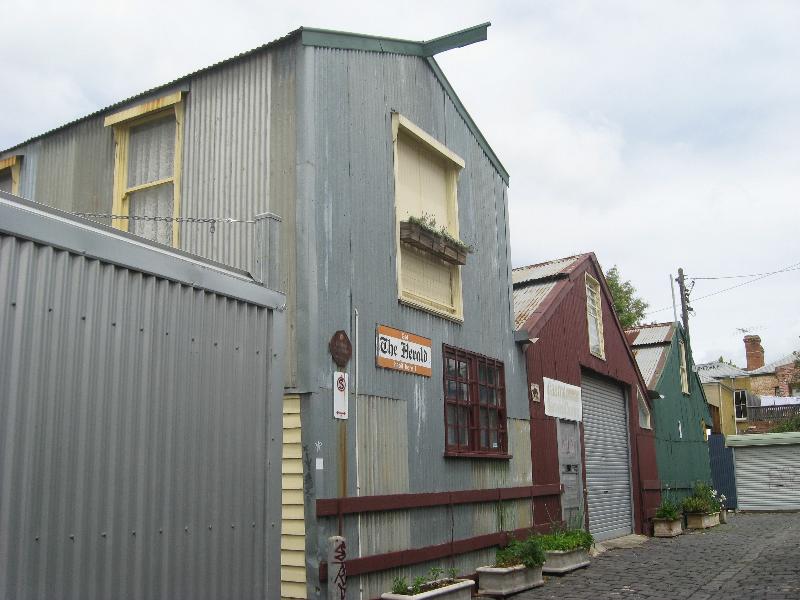

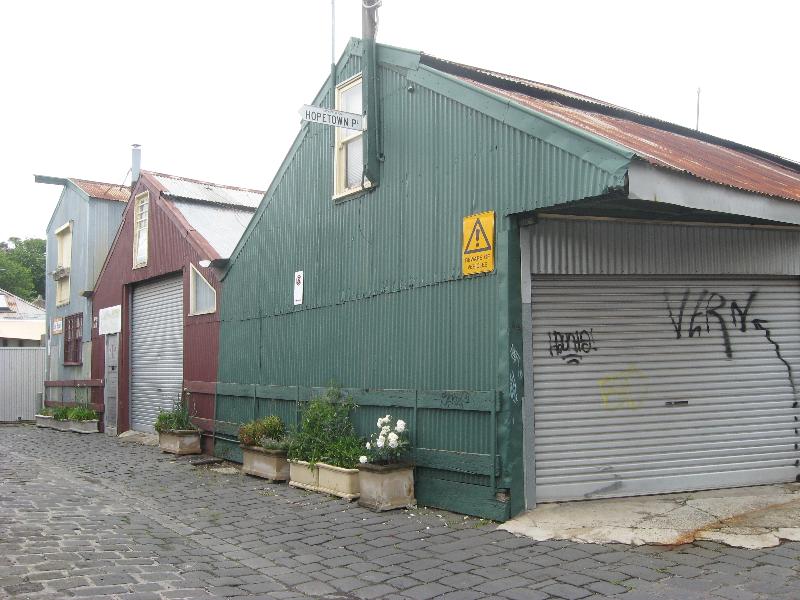
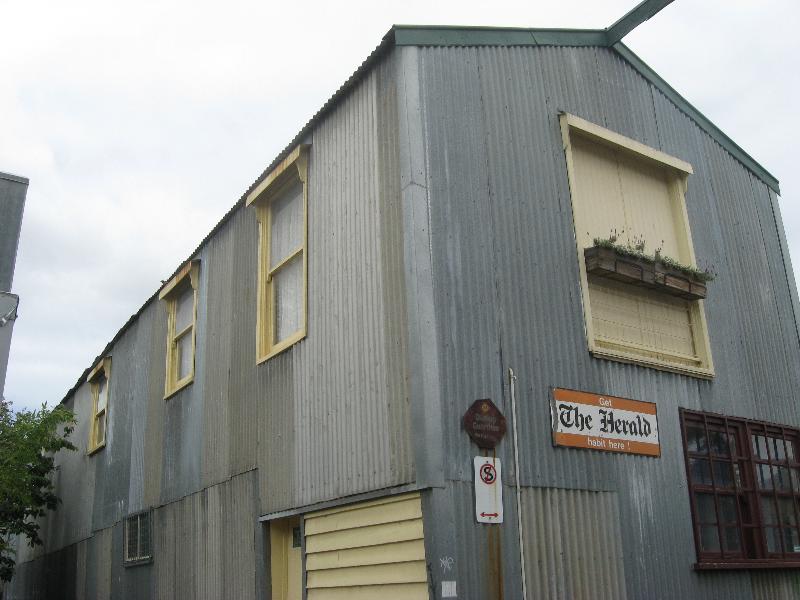
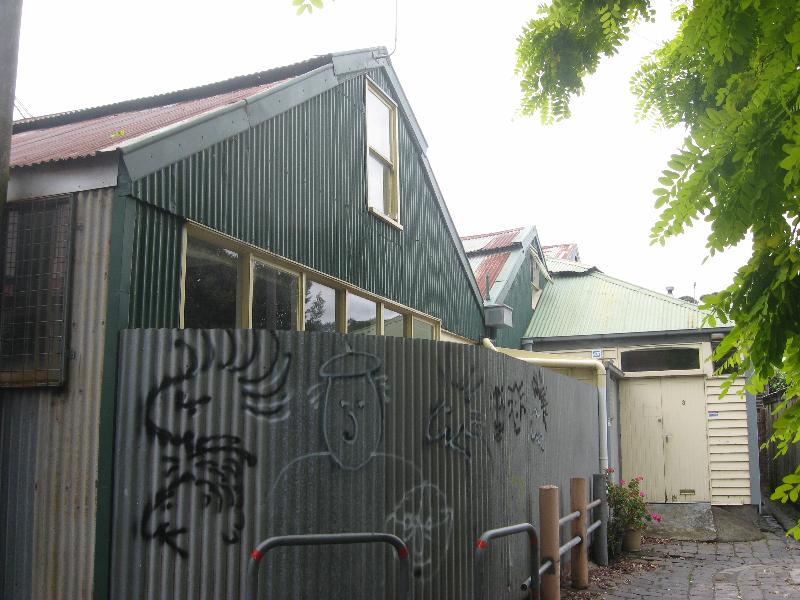
Statement of Significance
What is significant?
How is it significant?
Why is it significant?
[Criterion D]
The Former Melbourne Tramway and Omnibus Company Stables at North Fitzroy are also significant for the following reasons, but not at the State level:
-
-
FORMER MELBOURNE TRAMWAYS AND OMNIBUS COMPANY STABLES - History
HISTORY
CONTEXTUAL HISTORY
Horse omnibuses (or buses) in Melbourne streets were first provided by hotel-keepers in search of custom. In 1844 two Brighton publicans ran horse buses between Melbourne and Brighton. Other publicans did likewise, and by 1860 Melbourne had 28 horse bus lines radiating from Bourke Street to various suburbs. Most had their city terminus at Flinders Street Railway Station.
The Melbourne Omnibus Company was established in 1869 by Francis Boardman Clapp, Henry Hoyt and William McCulloch. The company initially operated a fleet of horse-drawn buses from the city to Fitzroy, and soon was also servicing the suburbs of Richmond, Carlton and North Melbourne. It commenced with twelve horse drawn omnibuses and about 120 horses, and by 1877 had about 80 omnibuses and 600 horses, servicing multiple routes throughout inner Melbourne. By 1881 its fleet consisted of 158 horse buses, each seating 12-14 passengers, and services extended as far as Moonee Ponds, Prahran and Brunswick. By 1882 the company had 470 employees, 1600 horses and 178 horse buses running on fifteen routes. In Town life in Australia (1883), R.E.N. Twopeny commented that 'Nowhere do omnibuses drive a more thriving trade than in Melbourne, and they deserve it, for they are fast, clean, roomy and well managed'.The success of the Melbourne Omnibus Company and the expansion of its operations throughout Melbourne's inner suburbs required the construction of stable buildings to house horses and vehicles. Stables were built at North Melbourne (VHR H1810), North Fitzroy (the subject building), Fitzroy, Richmond, Clifton Hill, South Melbourne, St KiIda, Moonee Ponds, Prahran and Port Melbourne.
In 1877 the Melbourne Omnibus Company was reconstituted as the Melbourne Tramways and Omnibus Company (MT & O Co), reflecting its early intention to move from horse-drawn omnibus services to a tramway service.Vehicles pulled on rails rather than directly on the road surface had the advantages of a smoother ride and the ability to haul greater loads. However it was not until 1883 that the company was given permission by the Victorian Government to operate a tramway service. The tramways were established on the original omnibus routes.
In the first decades of tramway operation, seven horse tram routes were operated in Melbourne by a number of different companies. These included the Beaumaris Tramway Company (operated 1887-1914), which ran trams between Sandringham and Cheltenham railway stations, the Caulfield Tramway Company, which operated services between Elsternwick and Glenhuntly railway stations (operated 1889-early twentieth century), and the Northern Tramway Company, which operated a line along Sydney Road from the terminus of the Brunswick cable tram route to Coburg (operated 1889-1915). Melbourne's last horse tram route closed in 1923.
Horse trams began to be replaced by cable trams from 1885. Horse trams had the disadvantage that the horses left an unwelcome trail of manure and urine in their wake, and had to be fed whether or not they were working. Horse trams were also more expensive to run: MT & O Co figures show that that the operating costs of horse trams were 54% higher per mile than those of cable trams. However in the late 1880s horse-tram lines continued to be built, as they were more economical to run on less frequented routes.
With frequent services and cheap fares, Melbourne's cable trams were quickly embraced by city commuters and the working classes alike, but horse-drawn vehicles continued in constant competition. The cable tram system operated from 1885 to 1940, and grew to be one of the largest cable car systems in the world, with about 75 km of double track on 17 routes radiating from the centre of Melbourne to neighbouring suburbs. The system was operated by the MT & O Co from 1885 to 1916, when it passed to the Melbourne and Metropolitan Tramways Board. The electric tram network was begun in 1906 when the Victorian Railways built an 'Electric Street Railway' from St Kilda railway station to Brighton, and the North Melbourne Electric Tramway and Lighting Company (NMETL) built a feeder line from the terminus of the cable system out towards Essendon. From 1924 Melbourne's cable tram lines were progressively converted to electric trams with the last cable tram operating on 26 October 1940.
Horse omnibus (on road)From c1869 - c1890
Horse tram (on rails)From c1884 - 1923
Cable tram From 1885 - 1940
Electric tramFrom 1906HISTORY OF PLACE
Tenders were called in the Argus in 1879 for stone paving of the stables at North Fitzroy, indicating that they were built at about that time. The Sands & McDougall directories indicate that MT&O Co occupied the premises in Brunswick Street from 1880 to 1889.An illustration on an illuminated address given to the MT & O Co Directors on 17 May 1881 includes an image of the North Fitzroy building, but does not show any other structures associated with the stables. The 1902 MMBW plan shows that the land to the east (between the stables and Brunswick Street) was by then occupied by housing. But as the stables had a Brunswick Street address from 1880 to 1889, it is likely that the land between there and Brunswick Street was open, which would have provided easy access from the road for horses andomnibuses.
The Moonee Ponds MT & O Co horse omnibus stables included a number of structures on its large site: a forge, an omnibus shed and a large feed house (shown below on the c. 1905 MMBW Town of Essendon Plan No. 1611), and it is likely that similar structures were once associated with the North Fitzroy stables.
By 1890, the directories note that the site was vacant, and after this date there are no further references to an association between the site and the MT & O Co.
The site in 1902 probably still had a horse-related function, as the MMBW plan notes a manure yard on the south edge. In the early twentieth century, the Sands & McDougall directories indicate the property was used as livery stables, where privately-owned horses could be kept for a fee. In 1921, the Argus advertised a sale of the property, as 'extensive wood and iron stables, shedding', with a loft, feed bins and water trough 'all pitched', plus lorries, a jinker, harnesses, chaff bags and straw bales.
An article by Lawrence Money ( 'Artist's pad has had a brush with a colourful past, but it's time to shed a tear and move on', The Age, 22 November 2012) notes a variety of historical uses: as an offshoot of the Melbourne fish and rabbit market, where produce was scaled and skinned; as a cabinet-maker's workshop; as an army truck depot during World War II; as a repair shop for Rover cars; an art studio for problem students from Collingwood Tech; and finally a residence and studio for the artist Murray Walker, who owned the property from 1972 until 2012.
Murray Walker was born in Ballarat in 1937 and studied in Victoria, Italy and London. He studied with the artist Fred Williams and worked for five years with John Brack. A painter, printmaker, tapestry maker, teacher and writer, he became an advisor and research consultant to a number of government institutions, such as the National Gallery of Victoria and the Victorian Ministry for Conservation. He has exhibited in most Australian states, and his work is represented in the Australian National Gallery and many Australian institutional and public collections, as well as in the Smithsonian Institute in Washington, USA. (http://www.artrecord.com/index.cfm/artist/8989-walker-murray-vaughan/)
KEY REFERENCES USED TO PREPARE ASSESSMENT
Biosis Research (Gary Vines), 'Melbourne Metropolitan Tramway Heritage Study', Report for Heritage Victoria, 2011.
Hermes database (Heritage Victoria) records for VHR H1810 (Former Melbourne Omnibus Company Stables, North Melbourne.
Lovell Chen, 'City of Yarra Heritage Citation' for Former Melbourne Tramways and Omnibus Company Stables, 2012, submitted with the nomination.
Lawrence Money, 'Artist's pad has had a brush with a colourful past, but it's time to shed a tear and move on', The Age, 22 November 2012.
Encyclopedia of Melbourne, online at http://www.emelbourne.net.au/biogs/EM00269b.htm
Information on the artist Murray Walker from http://www.artrecord.com/index.cfm/artist/8989-walker-murray-vaughan/
FORMER MELBOURNE TRAMWAYS AND OMNIBUS COMPANY STABLES - Plaque Citation
Built in 1879-80 by the Melbourne Tramway & Omnibus Company, which established the first large-scale public transport system in Victoria, this served as a stable for the horses needed for their horse bus service from the city to North Fitzroy.
FORMER MELBOURNE TRAMWAYS AND OMNIBUS COMPANY STABLES - Assessment Against Criteria
Criterion
The Former Melbourne Tramway and Omnibus Company Stables are significant at the State level for the following reasons:
The Former Melbourne Tramway and Omnibus Company Stables are historically significant for their association with the Melbourne Omnibus Company, subsequently the MT & O Co, which established the first large-scale public transport system in Victoria. The company's horse omnibus service, and its later horse tram service, were essential to the development of Melbourne's inner suburbs in the late nineteenth century and were the basis on which Melbourne's extensive cable tram network was developed. The Fitzroy North stables are evidence of an early and thriving public transport system that once operated in the inner suburbs. The building was still used as a livery stable, where privately-owned horses could be kept for a fee, in c1920 and is therefore significant for its continuing association with horse transport from the late nineteenth to the early twentieth century. [
Criterion A]
The Former Melbourne Tramway and Omnibus Company Stables are a rare surviving example of a structure associated with the first stage of public transport in Melbourne, before horse-drawn transport began to be replaced by cable trams in the late nineteenth century. It is a rare surviving example of a large timber and iron stable building. While several large masonry nineteenth century stable buildings survive in Victoria, many substantial stables at the time were built of timber and iron, and few of these have survived. The North Fitzroy stable is the only known surviving example of a horse omnibus stable which continued to be used in the cable tram era. It is also significant as a rare surviving example of a former livery stable. [
Criterion B]
The Former Melbourne Tramway and Omnibus Company Stables are architecturally significant as a fine example of a large-scale nineteenth century timber and iron stable building. The building demonstrates the form and scale of the substantial stables constructed in the nineteenth century to accommodate the large numbers of horses essential for public transport. [
Criterion D]
FORMER MELBOURNE TRAMWAYS AND OMNIBUS COMPANY STABLES - Permit Exemptions
General Exemptions:General exemptions apply to all places and objects included in the Victorian Heritage Register (VHR). General exemptions have been designed to allow everyday activities, maintenance and changes to your property, which don’t harm its cultural heritage significance, to proceed without the need to obtain approvals under the Heritage Act 2017.Places of worship: In some circumstances, you can alter a place of worship to accommodate religious practices without a permit, but you must notify the Executive Director of Heritage Victoria before you start the works or activities at least 20 business days before the works or activities are to commence.Subdivision/consolidation: Permit exemptions exist for some subdivisions and consolidations. If the subdivision or consolidation is in accordance with a planning permit granted under Part 4 of the Planning and Environment Act 1987 and the application for the planning permit was referred to the Executive Director of Heritage Victoria as a determining referral authority, a permit is not required.Specific exemptions may also apply to your registered place or object. If applicable, these are listed below. Specific exemptions are tailored to the conservation and management needs of an individual registered place or object and set out works and activities that are exempt from the requirements of a permit. Specific exemptions prevail if they conflict with general exemptions. Find out more about heritage permit exemptions here.Specific Exemptions:PERMIT EXEMPTIONS (under section 42 of the Heritage Act)
It should be noted that Permit Exemptions can be granted at the time of registration (under s.42(4) of the Heritage Act). Permit Exemptions can also be applied for and granted after registration (under s.66 of the Heritage Act)
General Condition: 1.
All exempted alterations are to be planned and carried out in a manner which prevents damage to the fabric of the registered place or object.General Condition: 2.
Should it become apparent during further inspection or the carrying out of works that original or previously hidden or inaccessible details of the place or object are revealed which relate to the significance of the place or object, then the exemption covering such works shall cease and Heritage Victoria shall be notified as soon as possible.General Condition: 3.
All works should be informed by a Conservation Management Plan prepared for the place.General Conditions: 4.
Nothing in this determination prevents the Executive Director from amending or rescinding all or any of the permit exemptions.General Condition: 5.
Nothing in this determination exempts owners or their agents from the responsibility to seek relevant planning or building permits from the relevant responsible authority, where applicable.Specific Exemptions:
Exterior
. Minor repairs and maintenance which replace like with like.
. Installation or replacement of external fixtures and fittings such as hot water services and taps, where such works utilise existing openings in the building fabric.
. Installation and repairing of damp proofing by either injection method or grouted pocket method.
. Removal of any extraneous items such as air conditioners, pipe work, ducting, wiring, antennae, aerials etc and making good in a manner which does not affect the cultural heritage significance of the place.
Interior
. Internal alterations to the building that do not affect original fabric.
FORMER MELBOURNE TRAMWAYS AND OMNIBUS COMPANY STABLES - Permit Exemption Policy
PERMIT POLICY
Preamble
The purpose of the Permit Policy is to assist when considering or making decisions regarding works to a registered place. It is recommended that any proposed works be discussed with an officer of Heritage Victoria prior to making a permit application. Discussing proposed works will assist in answering questions the owner may have and aid any decisions regarding works to the place.
The extent of registration of the Former Melbourne Tramways and Omnibus Company Stables on the Victorian Heritage Register affects the whole place shown on Diagram 2336 including the land and all buildings. Under the Heritage Act 1995 a person must not remove or demolish, damage or despoil, develop or alter or excavate, relocate or disturb the position of any part of a registered place or object without approval. It is acknowledged, however, that alterations and other works may be required to keep places and objects in good repair and adapt them for use into the future.
If a person wishes to undertake works or activities in relation to a registered place or registered object, they must apply to the Executive Director, Heritage Victoria for a permit. The purpose of a permit is to enable appropriate change to a place and to effectively manage adverse impacts on the cultural heritage significance of a place as a consequence of change. If an owner is uncertain whether a heritage permit is required, it is recommended that Heritage Victoria be contacted.
Permits are required for anything which alters the place or object, unless a permit exemption is granted. Permit exemptions usually cover routine maintenance and upkeep issues faced by owners as well as minor works. They may include appropriate works that are specified in a conservation management plan. Permit exemptions can be granted at the time of registration (under s.42 of the Heritage Act) or after registration (under s.66 of the Heritage Act).
It should be noted that the addition of new buildings to the registered place, as well as alterations to the interior and exterior of existing buildings requires a permit, unless a specific permit exemption is granted.
Conservation management plans
It is recommended that a Conservation Management Plan is developed to manage the place in a manner which respects its cultural heritage significance.
Cultural heritage significance
Overview of significance
The cultural heritage significance of the Former Melbourne Tramways and Omnibus Company Stables lies in the place being a rare surviving example of a large timber and iron stable building constructed c1879 to accommodate the horses required by the MT & O Co. The original open interior has been converted for residential use, but the original stone paved floor may remain (under the existing concrete) and the original structural timber frame of the building also appears to survive, and is a feature of the present interiors. Interior alterations which do not affect these original features are permit exempt.
-
-
-
-
-
FORMER CABLE TRAM ENGINE HOUSE
 Victorian Heritage Register H0718
Victorian Heritage Register H0718 -
BRUNSWICK STREET OVAL GRANDSTAND
 Victorian Heritage Register H0751
Victorian Heritage Register H0751 -
RESIDENCE
 Victorian Heritage Register H0163
Victorian Heritage Register H0163
-
177 Fenwick Street
 Yarra City
Yarra City -
19 Cambridge Street
 Yarra City
Yarra City -
2 Derby Street
 Yarra City
Yarra City
-
-












